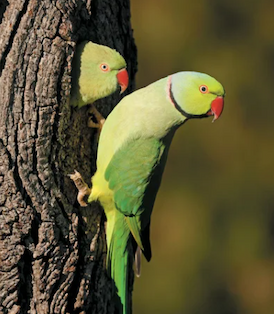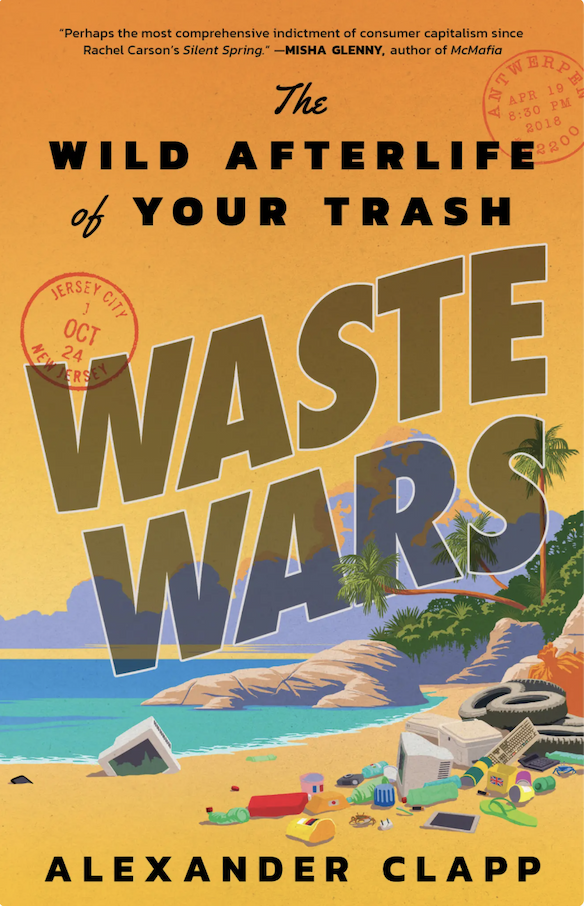A free, daily newsletter for anyone who loves science, inspiration and awe ͏ ͏ ͏ ͏ ͏ ͏ ͏ ͏ ͏ ͏ ͏ ͏ ͏ ͏ ͏ ͏ ͏ ͏ ͏ ͏ ͏ ͏ ͏ ͏ ͏ ͏ ͏ ͏ ͏ ͏ ͏ ͏ ͏ ͏ ͏ ͏ ͏ ͏ ͏ ͏ ͏ ͏ ͏ ͏ ͏ ͏ ͏ ͏ ͏ ͏ ͏ ͏ ͏ ͏ ͏ ͏ ͏ ͏ ͏ ͏ ͏ ͏ ͏ ͏ ͏ ͏ ͏ ͏ ͏ ͏ ͏ ͏ ͏ ͏ ͏ ͏ ͏ ͏ ͏ ͏ ͏ ͏ ͏ ͏ ͏ ͏ ͏ ͏ ͏ ͏ ͏ ͏ ͏ ͏ ͏ ͏ ͏ ͏ ͏ ͏ ͏ ͏ ͏ ͏ ͏ ͏ ͏ ͏ ͏ ͏ ͏ ͏ ͏ ͏ ͏ ͏ ͏ ͏ ͏ ͏ ͏ ͏ ͏ ͏ ͏ ͏ ͏ ͏ ͏ ͏ ͏ ͏ ͏ ͏ ͏ ͏ ͏ ͏ ͏ ͏ ͏ ͏ ͏ ͏ ͏ ͏ ͏ ͏ ͏ ͏
July 25, 2025—Parrots are everywhere and thriving. Plus, extreme heat is roasting the eastern U.S.; and Hulk Hogan's digital legacy. —Andrea Gawrylewski, Chief Newsletter Editor | | HeatRisk forecast for July 28, 2025. The NWS HeatRisk is an experimental color-numeric-based index that provides a forecast risk of heat-related impacts to occur over a 24-hour period. National Weather Service/NOAA | | -
- A controversial study from 2010 identified a bacterium that existed solely on a diet of arsenic, turning established biochemistry on its head. The journal Science officially retracted the study yesterday, but the authors are crying foul. | 4 min read
- Wrestler Hulk Hogan died yesterday at age 71. He was a common target of digital manipulation, exploitation and online hoaxes, spurring him to champion digital privacy rights. | 4 min read
- Earlier this month, images of the soccer ball designed for the 2026 FIFA World Cup match were leaked. Its tetrahedron-based design incorporates some unique physics and math. | 5 min read
| | Monk parakeets nest atop the entryway to Green-Wood Cemetery in Brooklyn, N.Y. Ali Cherkis | | How this happened: The pet trade and animal trafficking spread parrots around the world. Because they are smart and adaptable, they thrive in nearly every place they find themselves. Dozens of cities across North America and Europe are now home to flocks of feral parrots.
What the experts say: "Their presence is not good," says Emiliano Mori, a researcher at the Italian National Research Council. "We can't tell the complete scope of their impacts, but every time we look, there's something new to be discovered."  imageBROKER/Ronald Wittek/Getty Images Parrots' arrival in places like Chicago and London started with escaped or released pets. Many species, especially monk parakeets and rose-ringed parakeets (left), have formed self-sustaining populations. These urban parrots roost in parks and suburbs, scavenge for human food, and even join native bird flocks. While some ecologists worry the parrots could compete with local species for nesting space and food, others suggest that their social behaviors and intelligence could offer clues to how animals adapt to city life. | | | | |
- I found this week's science quiz pretty challenging—give it a shot and tell me how you did. Also check out today's Spellements, and remember, if you spot any words missing from the puzzle, email them to games@sciam.com. This week, Clarice Z. found genic, which means "relating to genes." Well done.
| | MOST POPULAR STORIES OF THE WEEK | | - 'Corn Sweat' Is Making This Heat Wave Even Worse | 3 min read
- How Logical Are You? Test Your Skills With These Problems from the New International Logic Olympiad | 4 min read
- Breakthrough Proof Brings Mathematics Closer to a Grand Unified Theory after More Than 50 Years of Work | 9 min read
| | Every Friday in summer we're recommending a great, freshly-published science read. Tell us what you're reading, or if you try any of our recommendations! | | Waste Wars: The Wild Afterlife of Your Trash Alexander Clapp. Little, Brown and Company, February, 2025.
 Billions of dollars are spent every year moving countless tons of trash all around the world in a waste black market—and no one knows exactly where it all goes or who is making a profit. Science journalist Alexander Clapp spent two years living out of a backpack in search of toxic dump sites hidden deep in unmapped jungles and traversing mountains of trash visible from space for his new book Waste Wars. "A lot of global trash over the last 30 to 40 years has been going to poor countries under the guise that it's being recycled," Clapp told Scientific American. But humans break down that waste in a lethal and dangerous process that releases toxic chemicals into the air and water, he says, that disproportionately affect the most vulnerable populations. "If you're sending waste to another country, you're not calling it trash on any export document—you're calling it recyclable material. One thing that I hope my book encourages or leads people to question is how much of our waste is actually moving around the world." —Brianne Kane Billions of dollars are spent every year moving countless tons of trash all around the world in a waste black market—and no one knows exactly where it all goes or who is making a profit. Science journalist Alexander Clapp spent two years living out of a backpack in search of toxic dump sites hidden deep in unmapped jungles and traversing mountains of trash visible from space for his new book Waste Wars. "A lot of global trash over the last 30 to 40 years has been going to poor countries under the guise that it's being recycled," Clapp told Scientific American. But humans break down that waste in a lethal and dangerous process that releases toxic chemicals into the air and water, he says, that disproportionately affect the most vulnerable populations. "If you're sending waste to another country, you're not calling it trash on any export document—you're calling it recyclable material. One thing that I hope my book encourages or leads people to question is how much of our waste is actually moving around the world." —Brianne Kane | | This past Wednesday in her weekly newsletter sustainability editor Andrea Thompson gave a great overview of the current heat wave affecting a large portion of the country, the science behind extreme heat, and some excellent tips for dealing with it. If you haven't already, I recommend adding Andrea's Earth & Environment newsletter to your reading list. | | Stay cool this weekend. Tell me what you're reading, and any other feedback: newsletters@sciam.com. See you Monday. —Andrea Gawrylewski, Chief Newsletter Editor
| | | | |
Subscribe to this and all of our newsletters here. | | | | |

